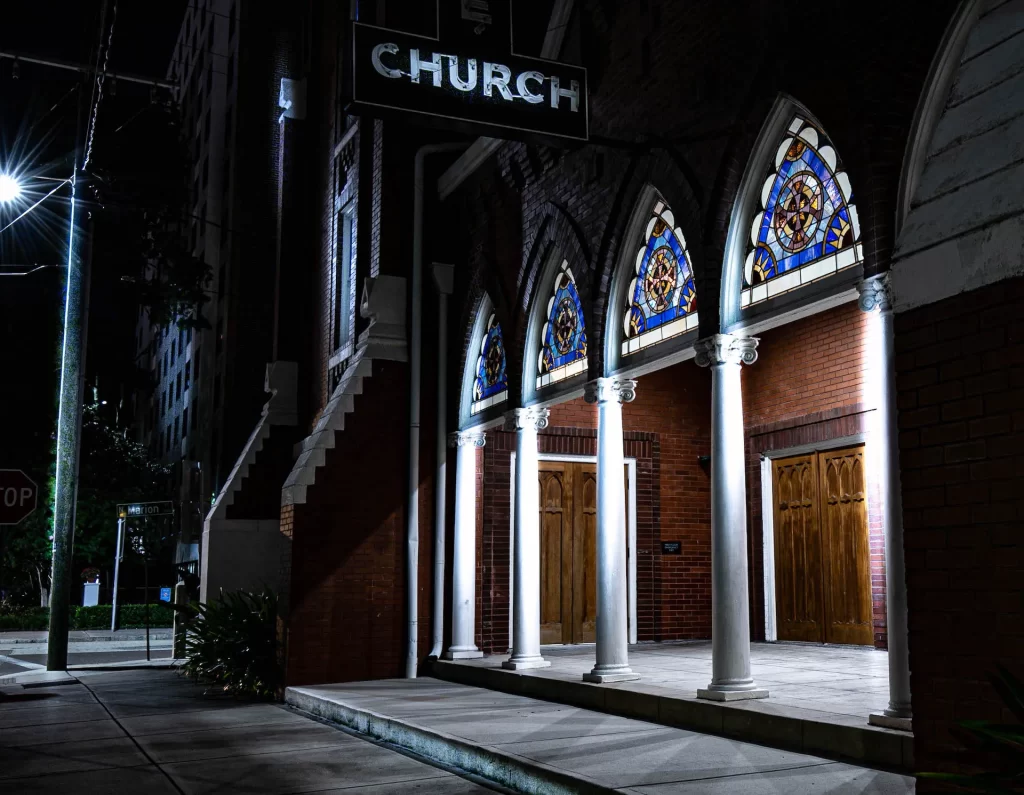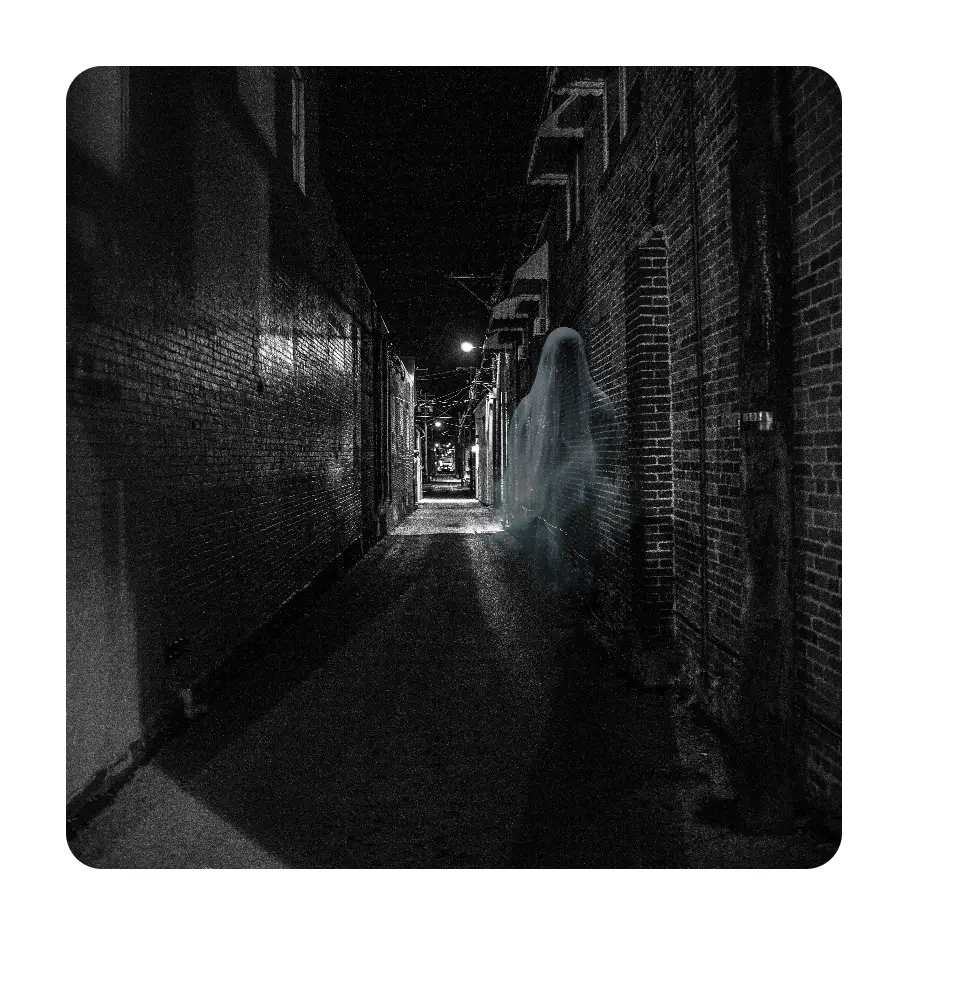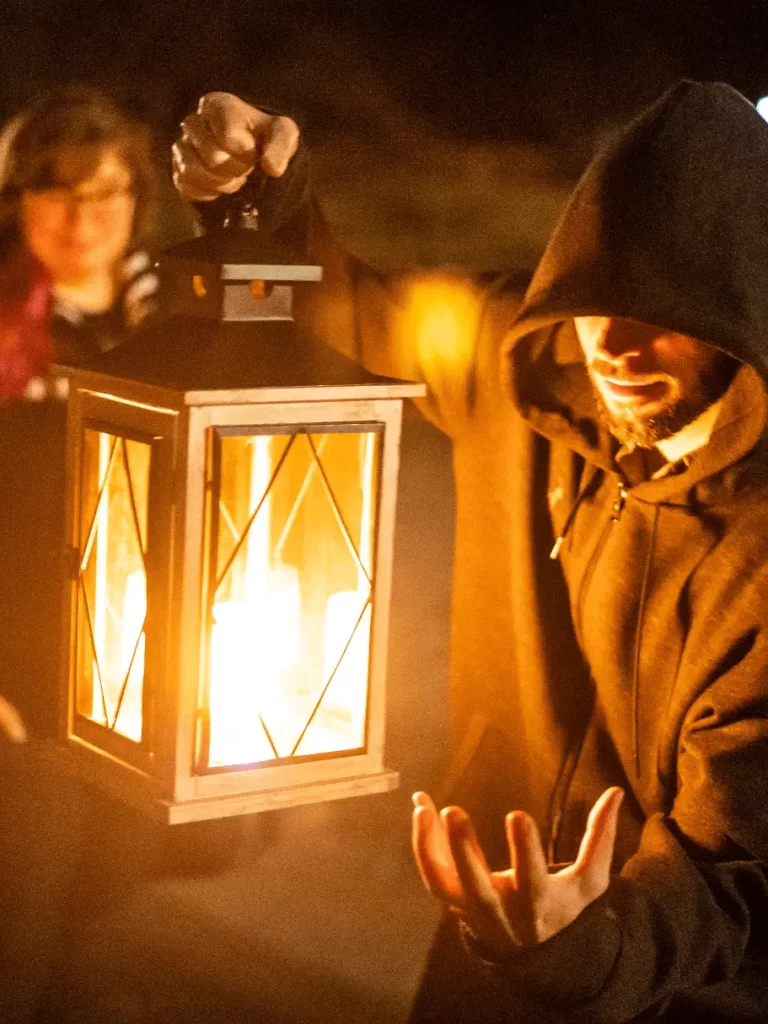Caitlin Wheeler
![]()
This was a great tour, and Tyler was an excellent tour guide! Not only was he a skilled storyteller, but he was also able to add context from Tampas h...
Kerry Wajer
![]()
The tour exceeded my expectations and Dalton was great. I loved all the stories being told and learned so much about the history of Tampa.
Yvette Woods
![]()
My friend and I had a fun evening with Dalton as he regaled our group with stories of the history and hauntings of the locations we visited. The exten...
Why is Tampa, Florida so Haunted?
To understand Tampa's many ghosts, we need to go back to the very early history of Tampa, which belongs to the Tocobaga Tribe of Native Americans. They are the ones who built the giant shell mounds that honored their dead chiefs. Some were two city blocks long.
Today the foundations of a parking garage sit atop the few remaining shells of the largest mound. Archeologists found many skeletons of Fort Brook soldiers, as well as Tocobaga elders, during the building of the structure. The Tocobaga lived in harmony with the bay, eating only what they needed. The peaceful Tribe also clubbed to death an early missionary almost as soon as he disembarked from his boat. So they were not all peace-loving and friendly.
Tampa Bay would have appeared uninhabited when the first European settlers arrived in the early 1800s. Diseases brought by the Spanish explorers and raids by northern native American groups had decimated the local Tocobaga populations. Later on, Florida's native tribes were lumped into one group, labeled the Seminole, or ‘wild ones.’ They were systematically provoked, betrayed, and hunted. The three Seminole wars between 1816 and 1853 were mean guerilla affairs, not pitched battles. The last remaining Native residents of Florida were chased deep into a swamp in 1858 onto land that the white man did not want. That’s a lot of anger, death, and betrayal to rest a city on. Yet here stands Tampa.
Tampa would not be anything like what it is today without the rivalry between two railroad tycoons called Henry. The legacy of the rivalry is most visible on the west side of Hillsborough bay on one corner of the vast, sprawling University of Tampa campus. The regal Henry B. Plant museum of European and Asian Art greets you as you cross the river on the West Kennedy Boulevard Bridge. The Museum was formerly a luxury hotel, and it too has its ghosts. Henry Plant built it in the early 1890s as the palace for his West Floridian Coast empire. The hotel single-handedly put Tampa on the map as a destination. The railroad he also completed in 1884, and the regular steamship service to Key West and Cuba opened up Tampa to bloom into today's bustling city.
Henry Plant had a friendly rival, also named Henry. Henry Flagler developed rail lines along the East Coast of Florida along the Atlantic, while Plant developed the Gulf Coast on the West. The whole of Florida was the real winner, gaining industry, transport, and magnificent buildings like the Henry B. Plant Museum.
The Plant Museum also has one of the few remaining cannons from Fort Brooke. It points ominously back towards Downtown Tampa, across the Hillsborough River, which has a rich history of battles, blockades, and bloodshed as well as piracy and sunken ships which bring their own ghosts.
The spectacular Tampa Riverwalk winds alongside the tranquil Hillsborough River and passes some of Tampa's most haunted and historical places. Like the shipyards that dotted the river. Shipbuilders built Pirate ships and blockade runners here during the Civil War. The Confederate merchants who broke the Union blockade traded cattle and wool with Spanish run Cuba in return for arms, supplies and ammunition, and brought back some of the first Spanish gold doubloons ever seen in the United States.
The Riverwalk runs from The Waterworks park up the Hillsborough as far south as the former site of the legendary Fort Brooke, which had a part in the Civil War and the Seminole Wars. The fort is long gone today, superseded by the vast MacDill Air Force Base, home of United States Central Command on the far side of the bay. The old Fort Brooke site still has its ghosts, though. Today they haunt the parking ramp built on part of the old fort.
Perhaps the spirit of the Tocobaga tribe of native Americans still permeates the air, the whole city is on their land, and Fort Brooke was built on the site of a shell mound burial site. Add to this the drama of War of Independence and The Civil War, and the natural conflicts that happen when many people live in what can be a hot and sticky city, and it becomes clear why Tampa is so haunted.
Tampa Terrors will take you to see the sites of hauntings by the ghosts of Tampa up close and personal. Your passionate local guides love to share these stories from the history books and relate the authentic accounts of encounters with the unexplained from throughout Tampa’s history.

Guidelines
Remain calm.
Ghosts spook easily, turn your back, and they can disappear. The best chance of seeing one is keeping your calm, taking a breath, and remembering they can’t hurt you.
Be polite.
Ghosts can’t hurt you unless we meet a poltergeist; they can be pretty mean. If we meet one on the Tampa Terrors tour, back away slowly, remember to be nice and polite.
Do not provoke the spirits.
Ghosts of Tampa probably don’t have sports team allegiances, but don’t spoil their uneasy rest by telling them how bad the Tampa Buccaneers have become.
Stay together.
There is lots to distract a person in Tampa but stay with us, so you get all the stories, not just half of them! Buddy up and say safe!
Watch your step.
Tampa is flat as a pancake, but slippery when wet. Stay away from the water, lest the Crocodiles or Alligators get you – yes, Tampa has both!



